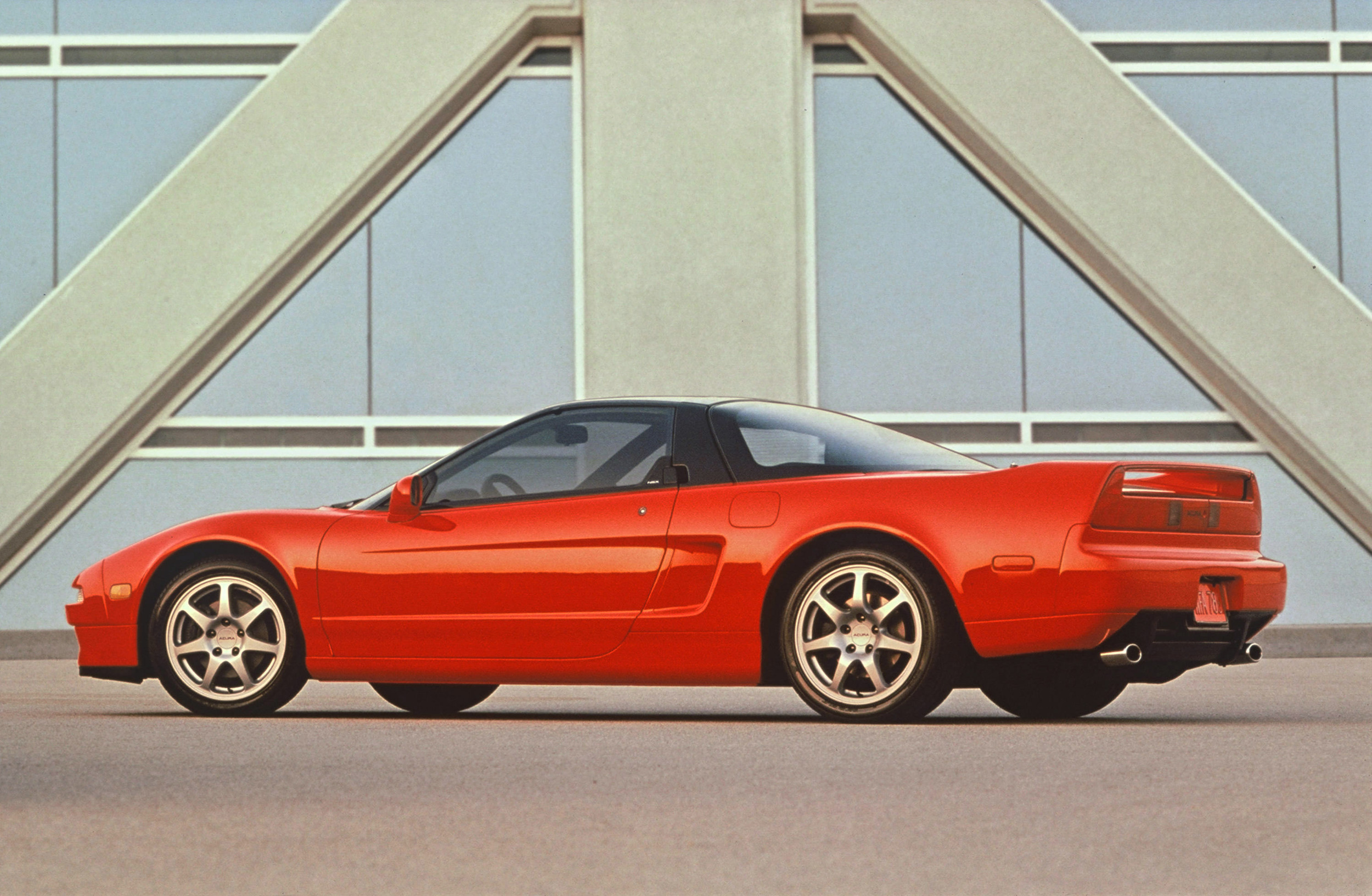
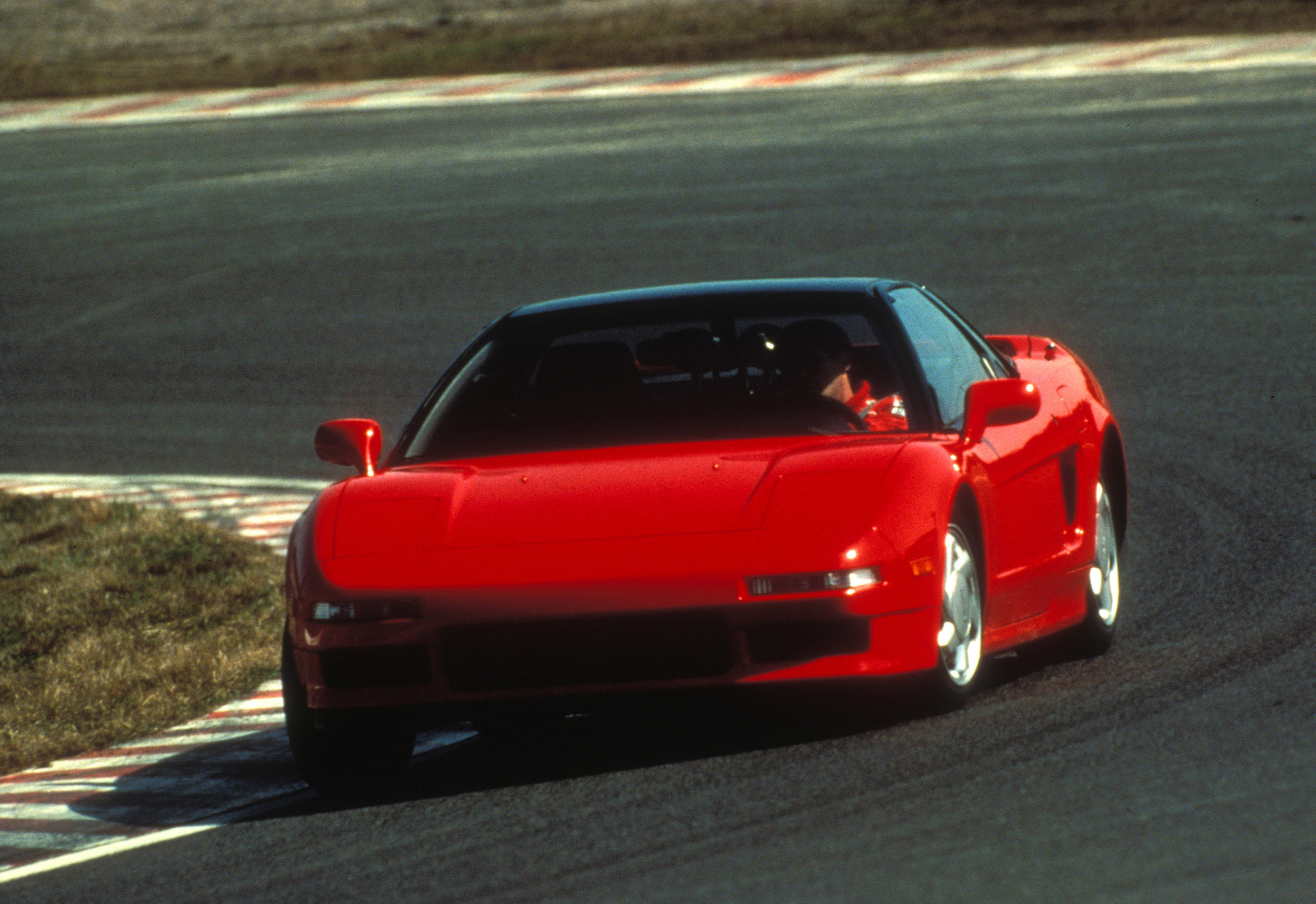
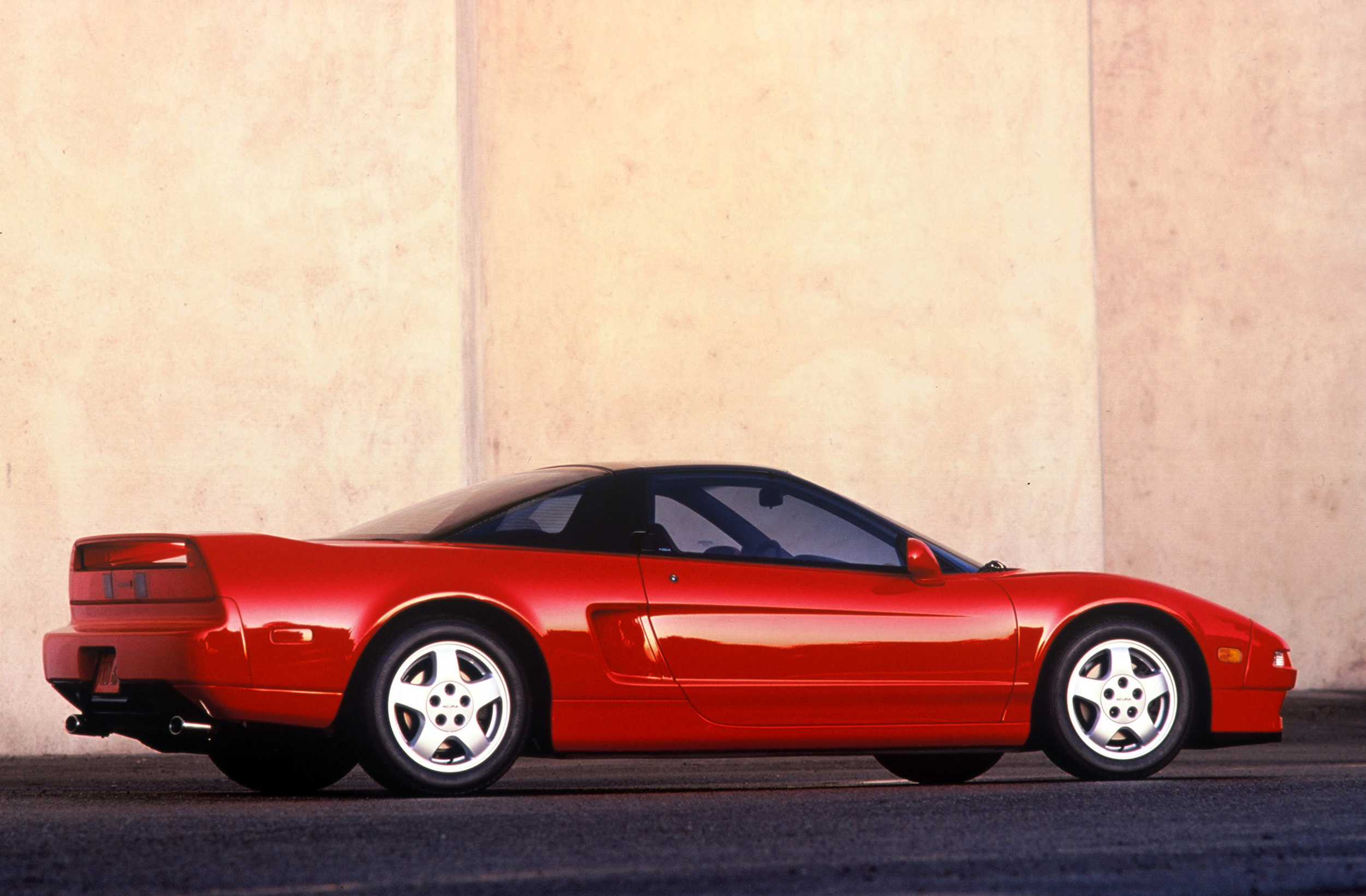
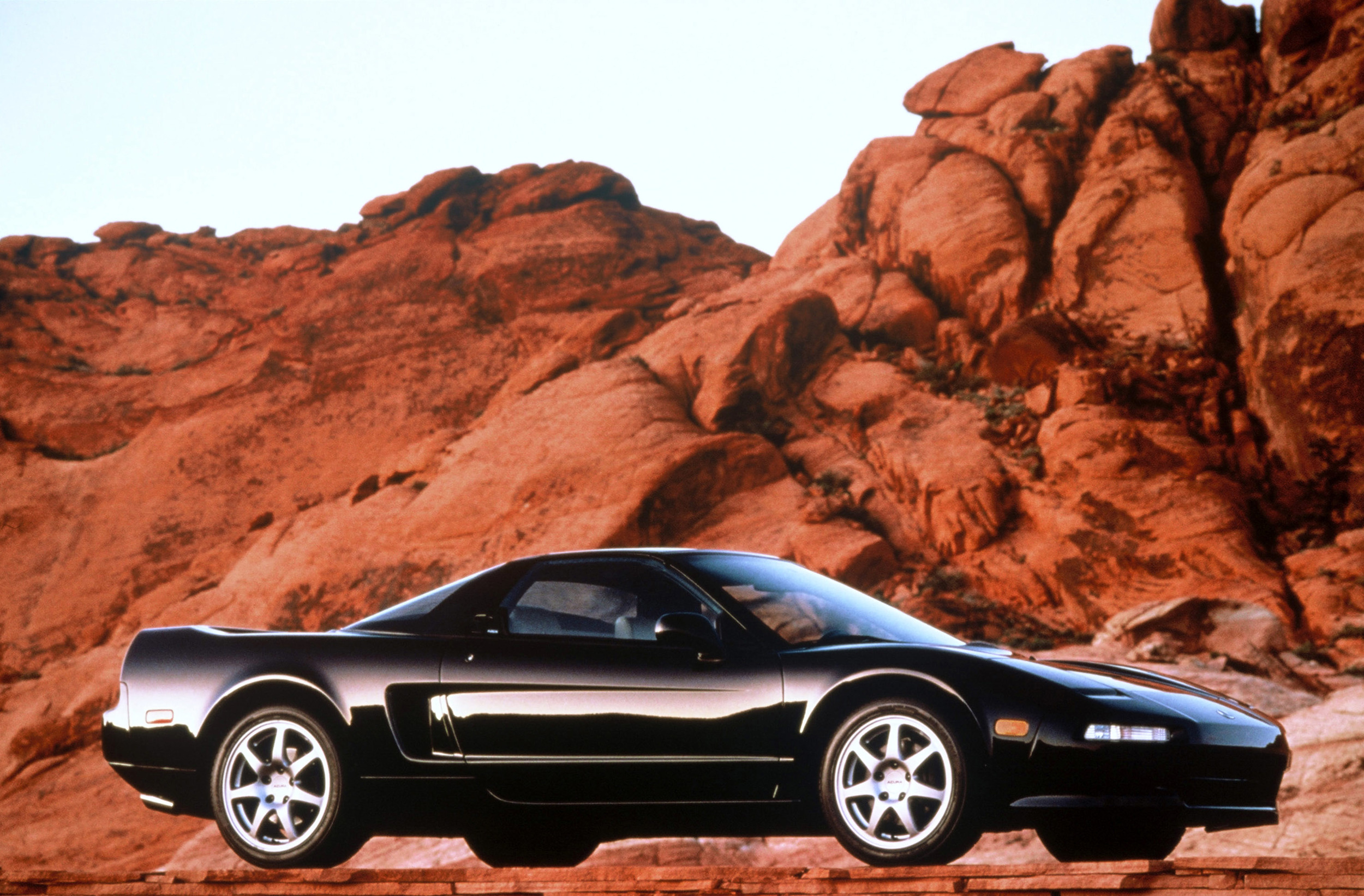
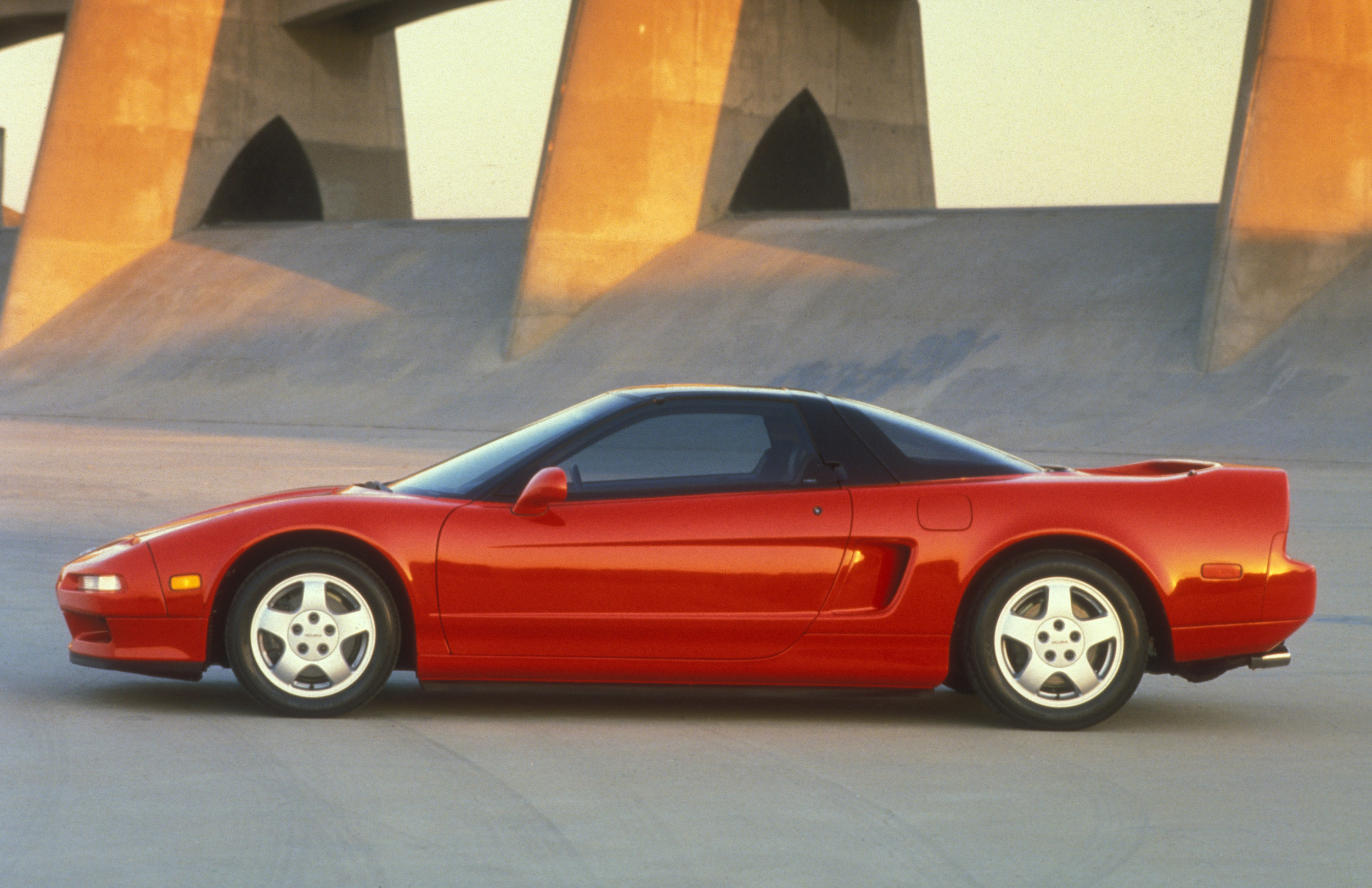
Until the NSX, supercars were impractical, temperamental things that cost a fortune to run. But Honda changed all that, with a car that's stunning to look at, fast and handles superbly - yet it's also docile, reliable and needn't cost an arm and a leg to run. Many owners are hanging onto their cars, unable to find anything comparable as a replacement. Try one - even briefly - and you'll immediately see their predicament.
Key Dates
12/90: Honda NSX arrives in UK.
11/92: Japan-only NSX Type R is produced.
4/94: Passenger airbag and seven-spoke alloy wheels now standard.
3/95: NSX-T arrives plus the F-Matic with auto gearbox.
2/97: Manual cars get 3.2-litre engine, six ratios and bigger brakes. The auto retains the 3.0 V6 powerplant. Japanese market gets Type-S and Type-S Zero.
5/02: Facelifted NSX gets fixed headlights, while Japan gets NSX-R.
7/05: Official announcement that the NSX is about to die.
Honda NSX (1990-2005) Checklist
- The window winder mechanisms break, entailing a door stripdown.
- The three hi-fi amps burn out; repairs are very costly.
- Make sure a new cam belt isn't needed; replacements are expensive.
- Clutches wear out in as little as 30,000 miles.
- Anything less than perfect panel fit means the car has been crashed. Alloy panels are easily dented.
- Rear tyres typically wear out in less than 6000 miles.
We Like
- Great to drive
- Reliable
- Relatively cheap to run
- Looks fantastic
We Don't Like
- Eats rear tyres
- Dull Honda image
